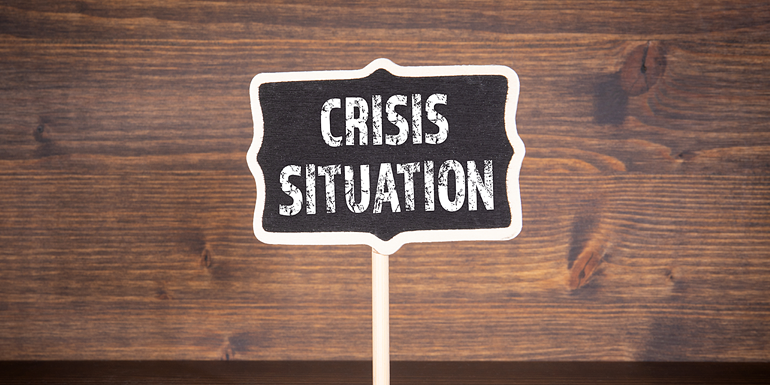If he were alive today, William Shakespeare probably wouldn’t be able to get his startup off the ground.
But Shakespeare’s time was different. Though he was a successful entrepreneur in his own right, the Bard couldn’t have foreseen the ultra-competitive world in 2016, when business owners often need to borrow money just to maintain a presence in the market.
Too bad for him—the rest of us can benefit from the opportunities afforded by lines of credit.
What Is a Line of Credit?
A line or credit is a type of loan that offers flexibility to borrowers. Unlike a one-time loan, a line of credit may be withdrawn from and paid back periodically, and usually carries interest rates as low as 6% and as high as 15%.
Think of it like an exclusive credit card: difficult to qualify for, but providing substantial financial freedom.
A line of credit is an ideal option for businesses with irregular cash flow that need to reliably have cash on hand. Lines of credit are also great for those organizations looking to finance big projects such as new construction, expansion efforts, product research and development, or major marketing/sales initiatives. Individuals sometimes use lines of credit to fund personal endeavors, too, such as home improvement or moving costs.
There are two general kinds of lines of credit: secured and unsecured
Secured lines of credit are backed by collateral—that is, property or assets the lender can claim if you don’t pay back the loan—and have lower interest rates. Unsecured lines of credits do not use collateral, and compensate for the risk with higher interest rates.
You might have also heard about revolving credit lines
Some banks/lenders offer revolving credit lines. These are the most comparable to your typical credit card as the credit stays available for an indefinite amount of time and can continually be borrowed and repaid.
Is a Line of Credit Right for Your Business?
When should you think about applying for a line of credit? And how can you ensure you’ll qualify for one?
Your financial goals determine how you should address these questions, so start with a concrete dollar amount. If you aren’t certain how much you’ll need, try to come up with a detailed estimate by calculating your income objectives, or the cost associated with the project or plan you have in mind. Besides labor, materials, and purchase prices, you’ll also need to factor in risk: will you be covered in case of an emergency?
Consider whether you would be better off with a business loan or personal loan:
How soon do you need the money?
Will you be able to pay it back quickly?
If the answers are “now” and “yes,” and what you’re looking for is an immediate influx of capital rather than an ongoing funding option, go with a one-time loan. Otherwise, apply for a line of credit—it may be harder to obtain, but it’s a safer and more versatile solution long-term.
Next, identify the right lender:
Banks are everywhere, and many are ready to issue credit to qualified businesses. Before applying for a line of credit with a bank, do your research. A major financial institution may be able to underwrite a large line of credit, but may have rigorous application requirements. By contrast, credit unions and regional community banks offer less funding, but may be more receptive to the needs of a small business. Look at whether the bank in question re-invests in its local community to get a sense of what kinds of companies fit its lending profile.
Private lenders are another alternative.
These include venture capitalists, real estate investors, and any wealthy group or individual who isn’t as visible—or accountable—as traditional lending institutions. Entrepreneurs and startups who would rather not work with a bank or are well-positioned within their industry may actually find superior deals this way. The key is to analyze your networks for potential connections with change-makers.
Is your business the right candidate for a line of credit?
Whether you target a bank or private lender, there are a few ways to make yourself into an attractive borrowing candidate across the board:
Think about what the other party is looking for
Lenders want to give money to people and businesses with impeccable credit history, revenue growth, and—most of all—the ability to repay them down the road. Essentially, credit providers are wondering, “What’s in it for me?”
This means maintaining tidy financials. Creditors may look for financial statements using accrual depending on the credit line. For lines as large as $1-2 million creditors may even require you present GAAP compliant financials.
Psst! This blog goes into more about the benefits of adopting accrual/GAAP when seeking funding for your business.
Work on your pitch
What do you have to offer a lender or investor? What differentiates you from the other people and organizations who are after the same line of credit? Take stock of your business plan and your lists of customers, vendors, and employees.
Establish good credit
The same principles behind consumer credit scores apply here as well: use your credit, but don’t maximize it every borrowing period; pay your debts on time and in full; and ask for increases when you can. This can be hard for small businesses so instead banks will ask credit seekers to put down collateral for the company credit cards. This is really the only major way to build credit during the early start days of your business. Together, these elements show lenders that you’re a responsible and active borrower.
Understand your collateral
What would a lender secure your line of credit against? Evaluate your vehicles, specialized equipment, and other kinds of property, as well as any real estate you may own: can you afford to put it all on the line?
Lines of credit may have complex tax implications, and may involve a host of elements not covered here. Securing a line of credit takes creativity, persistence, and a not-insignificant level of salesmanship. It’s a long, complex process, and this blog post is simply an introduction to the topic. For further guidance, make sure to talk to a tax and accounting professional.
Sources:
https://money.howstuffworks.com/personal-finance/banking/lines-of-credit.htm
https://www.bankrate.com/finance/personal-finance/borrowing-with-personal-lines-of-credit-1.aspx
https://www.debt.org/credit/lines/
https://www.forbes.com/sites/investopedia/2013/08/06/the-basics-of-lines-of-credit/#431427e55096



